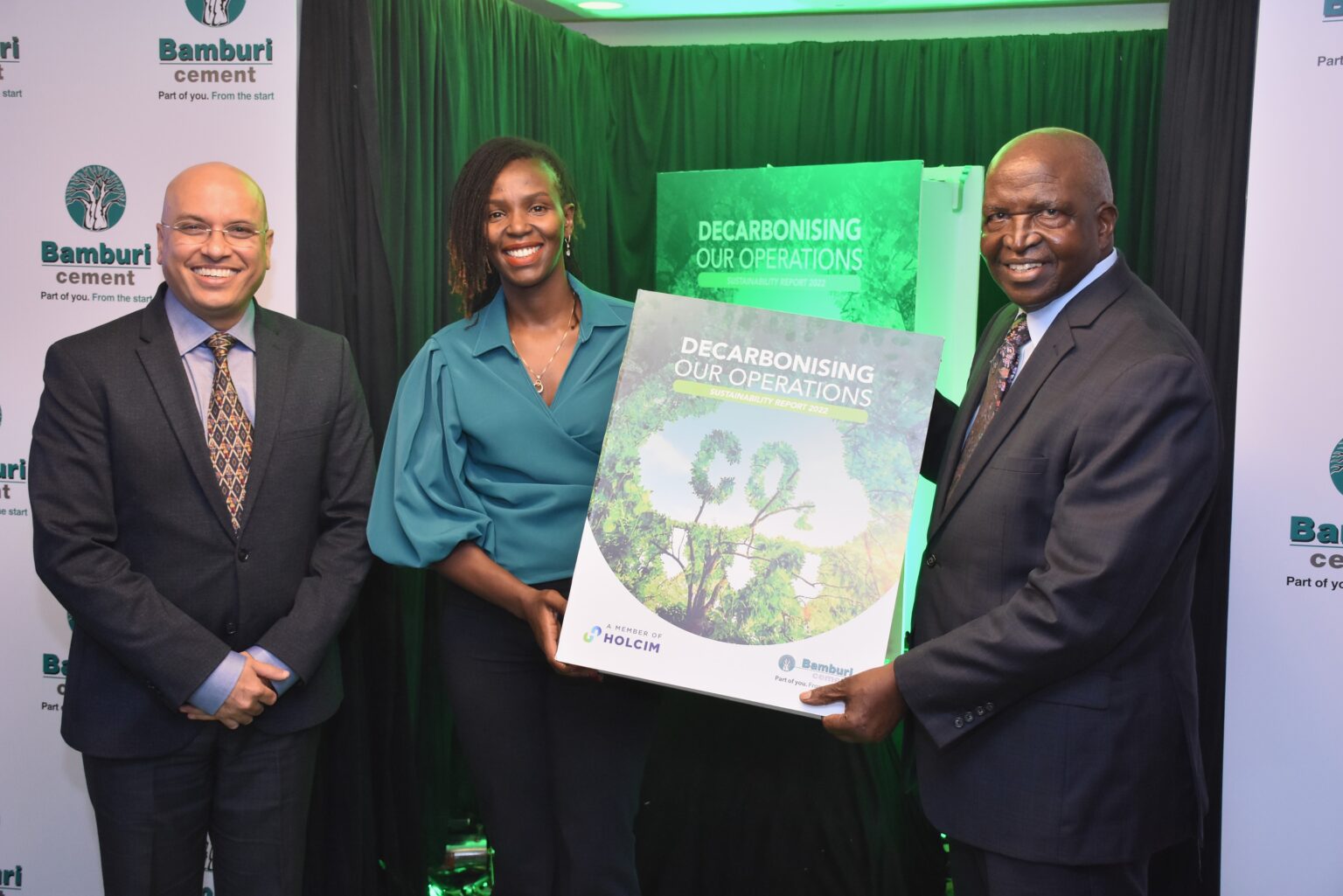- Bamburi Cement is rolling out plan to lower its net carbon emissions by 40% by 2030 as growing climate change impacts hit the globe.
- The company announced that it has lowered its carbon emissions by 3.2% and achieved a 5.5% increase in the use of alternative fuels.
- The reduction in the Scope 1 carbon emissions is attributed to ongoing key initiatives such as use of alternative fuels, the substitution of clinker, renewable energy and optimization of the cement manufacturing process.
Bamburi Cement Plc has unveiled a strategy to reduce its net carbon emissions by 40 per cent by 2030 in response to the increasing impacts of climate change worldwide.
Speaking during the launch of its 2022 Sustainability Report, the company announced that it has reduced its carbon emissions by 3.2 per cent and achieved a 5.5 per cent increase in the use of alternative fuels in its operations.
Bamburi Cement Group Managing Director, Mohit Kapoor, attributed the reduction in Scope 1 carbon emissions to ongoing key initiatives, including the use of alternative fuels instead of fossil fuels, alternative raw materials to substitute clinker, the use of renewable energy, as well as the optimization of the cement manufacturing process.
“Climate action is at the core of Holcim’s strategy for 2025 – Accelerating Green Growth. Our aggressive action in climate action is geared towards tackling emissions throughout our operations. In cement manufacturing, the biggest emissions come from the cement production process, particularly the calcination and burning of fossil fuels,” Kapoor elaborated.
Bamburi Cement Eco – Brands
During the reporting period, Bamburi Cement eco-labeled four of its cement brands with a lower carbon footprint, ranging from 30 percent to 90 percent, compared to pure Ordinary Portland Cements.
The green cement includes Bamburi Fundi (-54 per cent), Bamburi Tembo (-41 per cent), Bamburi Nguvu (-41 per cent), and Bamburi Duracem (-64 per cent). Additionally, the ratio of clinker used in cement production decreased to 53.3 per cent from 54 per cent in 2021, mainly attributed to increased production of Fundi and Minecem, which make up part of the green cement portfolio.
“Bamburi Cement continues to be an industry leader in sustainability and innovation, displayed through our efforts to provide the widest range of green products to our customers. We are cognizant of our responsibility to accelerate climate action and initiatives to achieve net-zero by 2050,” noted Bamburi Cement Sustainability and Geocycle Director, Ms. Jane Wangari.
Under its circular economy pillar, Bamburi’s waste management arm, Geocycle, successfully co-processed at least 75,000 tonnes of waste in cement production processes last year, bringing the total to 745,000 tonnes of waste recycled in the last three years. Geocycle primarily offers waste management solutions to external partners, enabling them to dispose of waste at Bamburi Cement plants for co-processing.
Under its nature and water pillar, Bamburi Cement has rehabilitated over 360 hectares of quarries into productive ecosystems with sustainable land-use activities in the iconic Haller Park and Forest Trails through the Lafarge Ecosystems.
Bamburi Cement Chairman John Simba said, “Sustainability holds great urgency and significance due to the increasing need to protect our environment and livelihood. We assure our stakeholders that we will continue to implement more aggressive measures in pursuit of climate change mitigation.”
The firm’s green growth trajectory is geared towards decarbonizing its business operations to achieve net-zero carbon (CO2) emissions by 2050. Kenya has pledged to cut its carbon emissions 30 percent below business-as-usual levels by 2030.
Read also: From COP27 to COP28 – key factors for Africa before the 2023 UN Climate Change Conference
Africa Climate Change Impact
According to the United Nations, Africa is the continent most vulnerable to the impacts of climate change. The continent is already experiencing temperature increases of approximately 0.7°C over much of its expanse, and with predictions indicating further temperature rises, Africa is confronting a broad spectrum of impacts, including heightened drought and floods.
The UN anticipates that in the near future, climate change will contribute to decreases in food production, floods, and the inundation of coastal zones and deltas, the spread of waterborne diseases and the risk of malaria, as well as alterations in natural ecosystems and the loss of biodiversity.
However, the continent is not a significant source of greenhouse gas emissions. Africa accounts for only 2–3 per cent of the world’s carbon dioxide emissions from energy and industrial sources.
